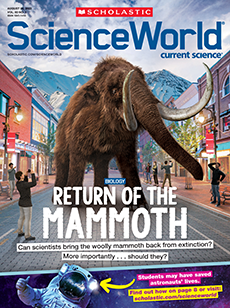Several decades ago, getting a bacterial infection was often a death sentence. Few treatments could stop single-celled pathogens once they invaded the body. But in 1928, a Scottish doctor and scientist named Alexander Fleming made a groundbreaking discovery almost by chance. One of his failed experiments ended up holding the key to creating the world’s first antibiotic: penicillin. This medication could wipe out disease-causing bacteria—and would change medicine forever.
NGSS: Core Idea: ETS2.B, ETS1.A, ETS1.C
CCSS: Reading Informational Text: 3
TEKS: 6.4A, 7.4A, 8.4A, B.4A

